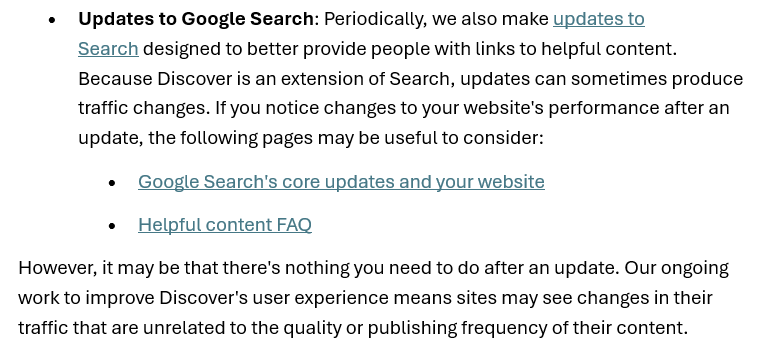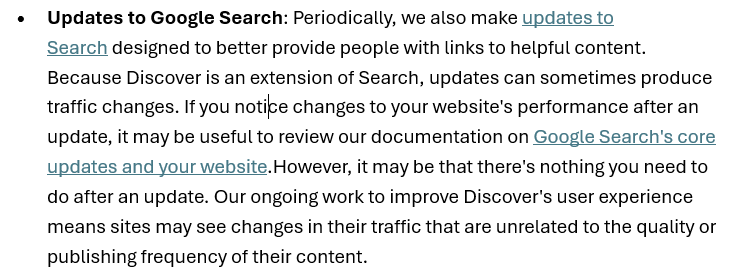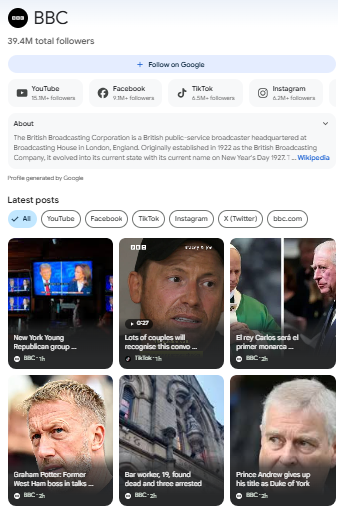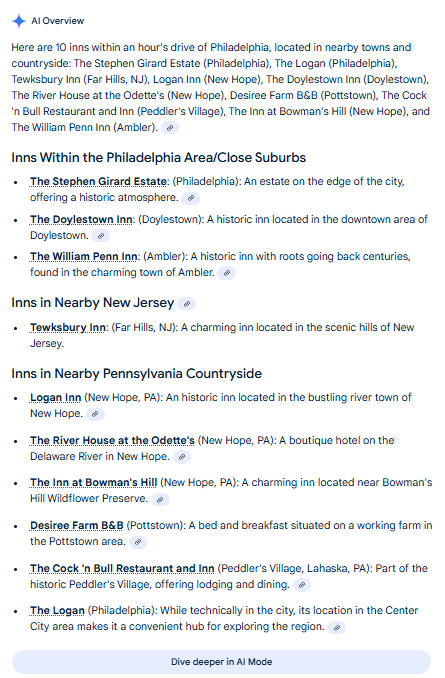👕 WTSMerch now available
🎟️ WTSFest 2026 tickets on sale for London, Portland, & Philadelphia
👕 WTSMerch now available
🎟️ WTSFest 2026 tickets on sale for London, Portland, & Philadelphia

Author: Erin Rooney Doland
Last updated: 28/10/2025

In the spring of 2024, Google took a “big swing” against publishers by reducing some sites’ access to Google Publisher Center (GPC). At that point, some sites retained GPC access, some sites lost access, but then got it back, and others lost access for good. The “knockout swing” came earlier this year when Google finally removed user control access to GPC for all publishers.
Removing user controls in GPC immediately made it more difficult for publishers to identify their RSS or Atom news content feeds and specify their content focus areas. Sites can no longer submit their logos or identify the name of their publications. And gone is the ability for new sites to notify Google that they have a valuable, content-rich blog.
Google has provided a few reasons as to why it closed GPC user controls: “We’re making this change to reduce steps in the publisher workflow and provide a clearer, more straightforward experience for our users.”
I’ll be frank, I am extremely unclear about who the users are in Google’s formal statement — taking control away from publishers doesn’t make anything better for the people who had GPC accounts.
Google historically claimed that RSS or Atom content feeds weren’t important for ranking on Google surfaces, which would have been in line with their reasoning for ditching feed identification in GPC. However, for the last six months, Google has been releasing features on its surfaces that require RSS news feeds to participate. News feeds are the foundation for the Follow feature in Discover and, I assume, the Preferred Sources feature in Top News. They also appear to play a role in the somewhat new (though currently difficult to find) Publisher Profiles.
But Google’s attack on publishers doesn’t end with GPC. Google has been going after publishers on its Discover surface (in the countries where it exists), too.
The Discover requirements page hasn’t been significantly updated in many months, yet it has become obvious that technical and content requirements for News and Discover qualifications are more stringent now than they were even as recently as this Spring. Any site wanting to be included on these Google surfaces is now playing a guessing game at what they need to do to qualify because Google isn’t being forthcoming.
The only thing that has changed on this page recently is that they removed a single link.

Alt text: The image shows a block of text from Google's Discover requirements page. There is a link to a page titled 'Helpful content FAQ." It links to a now-outdated blog post about what meets Google's definition of helpful content.

Alt text: The updated version of Google's Discover requirements page. There is no longer a link to Google's blog post about helpful content.
To add insult to injury, AI Overviews (and the continuation of featured snippets) are harming traffic to publisher sites by answering informational queries directly on the Google search results page. Even with citations, publishers are seeing impressions increase or hold steady while clicks plummet.
(I’m not even going to touch on the legality of training the AI system that powers AIOs on copyrighted content that Google isn’t compensating publishers for, plus of course, publishers can’t block their content from being crawled, lest they be excluded from all Google surfaces. That topic is an entire article in itself. Sigh.)
On October 13, Google announced it will be pooling trending articles in its Discover feed, summarizing all relevant articles into a single blurb. In the US, South Korea, and India, any publisher writing breaking or trending news will now be informing AI instead of getting a link directly. You can click on the itty, bitty, tiny + sign next to a single logo to see all the publishers informing the AI summary, but the percentage of readers who will do this is miniscule compared to current click rates from the main Discover feed.

Alt text: An AI summary of a trending sports story has three tiny news outlet logos above it and a +2 that indicate a reader could click on the logos to see links of the five articles that were scraped for Google to create its AI summary.
Google is also testing AI-generated summaries on all articles in Discover that reveal (correctly in some cases, incorrectly in others) the content of every article in the feed. If you ask me, this is another surefire way to create a zero-click situation. In a few rare cases, someone might click through to read the entire article, but most people aren’t going to after reading the summary. Publishers rely on clicks to bring people to their site and generate ad revenue. No click. No revenue. Eventually, no publication.
Another recent example of Google giving things and then taking them away was the announcement in September which stated that if readers click on a publisher’s logo in their Discover feed it would take them to the publisher’s profile. The profile provides links on cards to all social and site content, similar to an Instagram profile. In true Google fashion, however, around October 14, this function stopped working. Maybe it will come back? Maybe it won’t! Oddly enough, the profiles are still there but nothing links to them and their URL slugs are a series of seemingly randomized letters and numbers that no one could intuitively guess.

Alt text: BBC's publisher profile with links to their latest articles on social media and bbc.com
The final (and most annoying, in my opinion) jab at publishers is Google’s claim that they are bringing Discover to the desktop homepage. Earlier this year at the Search Central Live event in Spain, Google showed pictures of what it would look like and announced it was happening. Discover drives a significant amount of traffic to the publishers that make it onto the surface and expanding it to desktop has the potential to double this traffic. There was finally positive news for publishers! But, like “fetch”, it didn’t happen.
If I were to don a tin-foil hat, my theory is that Discover won’t ever come to Google’s desktop homepage. My based-on-nothing-but-my-gut assumption is that internal priorities have significantly shifted and we are much more likely to see an “Ask Anything” AI Mode desktop search homepage in the coming months instead.
There is no quick fix for publishers to regain their lost traffic, however, I believe that it is possible for publishers to adapt to this new Google era. I’ve recommended all these tactics to my clients and have seen enough positive results to feel confident in sharing them with you.
There are best practices and requirements on the Discover requirements page and you need to treat all of the items as essential. Set up the max-image-preview meta robots tag, have your images in structured data be at least 1200 pixels wide, establish and submit RSS or Atom feeds and post these feed links on every single article, have a Google news sitemap, etc. Nothing on this page is optional, I can’t stress this enough.
We had multiple clients this spring who were following the must-do requirements on the Discover page, but weren’t doing all of the (what appeared to be) optional recommendations. One day, all these clients saw enormous drops in traffic from Discover. There wasn’t any announcement about changing Discover requirements, and there wasn’t a core Google update.
For example, one client didn’t have an RSS feed in the <head> code of their articles and they saw a 75% decrease in impressions overnight. A week later, they added in an RSS feed and they regained a large portion of the lost traffic the next day. The “optional” RSS feed was clearly no longer optional. Not following every suggestion on the requirements page was at the heart of every drop we saw in Discover traffic for our clients.
At some point, I suspect that Google will update its Discover requirements content and finally reveal the changes it has made to qualify for its surface. When it does, you want to be the first to know and the first to adapt to the new requirements.
Put a call to action for readers on every article of your site to add your publication as a preferred news source in their Google News settings. It’s free and will keep your content front-and-center for your most loyal readers.
Publishers need to move away from "round-up posts" and generic listicles that are easily summarized by AI. Examples include: top ten restaurants, summer movies, horror novels, 10 inns within an hour drive of Philadelphia, etc. These types of articles are the most vulnerable to being cannibalized by AI Overviews and summaries.
A good rule of thumb is that if an entity in a listicle could have a knowledge panel, stay away from using it. Shift your editorial strategy away from lists with people, places, attractions, objects, etc.
Let’s take a look at the “10 inns within an hour drive of Philadelphia” search results I just mentioned:

Alt text: An AI Overview that lists 10 inns near Philadelphia in nearby suburbs, New Jersey, and the Pennsylvania countryside.
The AI Overview for this query reads like a blog post that identifies the inn options. Additionally, on the same SERP there are ads for the inns mentioned in the AIO response. Publishers might be given a chain link icon in the AIO, but there is no need for anyone to click on it when the AIO gives away a full article’s worth of content. Gone are the days of the traffic-generating review listicle to meet the high-volume “who,” “what,” and “best” queries.
Thanks to the Publisher Profiles, we can now confirm that Google is monitoring activity on social media sites and YouTube for follower counts, as well as commenting and sharing activity. If/when you find your Publisher Profile, note which accounts Google has associated with your brand and pivot some of your energy into keeping these accounts active and engaging. Until simple access to Publisher Profiles is reinstated, I’ve been using Nomadic’s Google Profile URL Builder tool to manually find Publisher Profiles and the results are fairly accurate. You can also identify and get a better understanding of your competitors’ publishing activity and their performance on socials and YouTube.
Publishers need to create deeply researched, comprehensive, original, and unique content that even an AI summary would fail to fully capture. The goal is to make the summary a compelling teaser, not the full story.
This might be a massive shift in your editorial strategy, but when you publish complex content that is difficult to turn into a bulleted list, AIOs are more likely to drive traffic to your site or not appear in the SERP at all.
Instead of an article about the 10 best photo opportunities along a stretch of the Blueridge Parkway, an article that discusses the flora and fauna of the Blueridge Parkway and what zones you are most likely to find examples of those items and instructions on how to reach those zones would be much more difficult for AIO to “steal.” Plus, the more in-depth article will likely be more helpful for your readership and perform better in the SERPs.
AI Overviews might summarize "5 great places to eat in Ft. Worth," but it can't replicate the specific, first-hand experience, photos, and personal recommendations of a well-written, original article when an entity listicle can’t be avoided.
I like to show my clients the article “10 Best Organic Mattresses for Non-Toxic Sleep - 2025” on The Good Trade website as an example of this advice. This publication can’t get around listicles when they’re reviewing products like mattresses, so they do what AI cannot. They personally try out each mattress and show photographic proof. They explain the criteria they used to evaluate the mattresses. They get reviews from their readers about the mattresses they own. They discuss their business model and how long they have been reviewing mattresses. They provide in-depth information about every mattress that not even the manufacturers’ websites mention. This article is quality, first-person content and could never be replicated in an AIO.

Alt text: A screen shot of the "What is our review process?" section of the mattress review article. It identifies 10 tests, 30 nights tested per mattress, 3 sleep experts, 6 factory tours, and 1,200 Good Trade readers surveyed.
Publishers desperately need to focus on establishing their brand as a trusted entity in their industry, rather than trying out-dated SEO strategies from five years ago to attempt to rank for every high volume keyword. Throwing something at a wall to see what sticks is no longer a content strategy (and probably never should have been).
Know your audience, write content other news outlets in your vertical will want to source, amplify your incredible work, do all the things you can to improve your brand and brand recognition.
Know exactly who you are, what you bring to the industry that no one else does, do your thing better than everyone else, be trustworthy and transparent with what you do, and then let everyone know how awesome you are. You have to invest in building your brand because no one else is going to do it for you.
You might even begin to invest in creating content you can become known for. Good examples include: the Fortune 500, Forbes’ Real-Time Billionaires, People’s Sexiest Man Alive, Time’s Person of the Year.
Building a direct relationship with readers is more important now than ever. Find readers through Substack, curated content email newsletters, social media, video platforms, podcasts, pop-up stores, mobile apps, paid subscription models, other search engines, and forums. Relying only on organic traffic from Google surfaces is extremely dangerous and you need to diversify.
I’ve mentioned Google Discover a lot in this article since it is currently such a large source of traffic for many publishers. But like other Google surfaces and services that populate the Google Graveyard, Google could kill Discover without a moment’s notice. (Remember Google Hangouts? Google+? Google Reader?) Google’s push to AI Mode is also a shift away from traditional search, and so time may be running out on the SERP.
The New York Times Games app, Vogue Magazine’s TikTok channel, and the NextDraft email newsletter have become staples in my life. All three build an audience of brand loyalists in non-Google dependent ways.
The relationship between Google and publishers absolutely feels one-sided and punitive right now, but there are ways for publishers to be more innovative and focused on their core mission to increase readership.
As you finish this article, remember its three key themes:
1. ADAPT your editorial style,
2. GO DEEP with your original reporting and content
3. DIVERSIFY the places you rely on for earned/organic traffic.
Google is changing its relationship with content and content providers, and you have to change or perish – Google has given publishers no other options. But, by creating high-quality, people-first content that cannot easily be replicated or summarized, I believe that there is hope for publishers moving forward.
Profound helps brands win in generative search. Monitor and optimize your brand's visibility in real-time across ChatGPT, Perplexity, Google AI Overviews, Microsoft Co-pilot, Grok, Meta AI, & DeepSeek.
